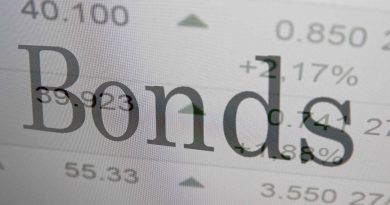Keeping Up With Inflation in a Freefall Market
SAVVY INVESTOR>GLOBAL INVESTMENTS
Keeping Up With Inflation in a Freefall Market
Using “With Profit Funds” of the United Kingdom as a time deposit alternative
By Doby Atilano
We have learned through this crisis not to overexpose one’s savings in the stock market, mutual funds or any instrument that has a price and swings up and down. We have seen that those who are least affected have only exposed 10% of their income yearly to volatile instruments in order to reduce risk and maximize returns in the long term.
These clever ones who apply the dollar cost averaging strategy are probably the individuals who have panicked less during these times as they still have a considerable amount of liquidity to average out bargain prices during the crises.
However, most believers of the dollar cost averaging strategy still question how to maximize the rest of their disposable income or savings. In freefalling markets, most resort to cash and bite the losses of inflation. During these times, a 3-4% loss from inflation on cash is good enough.
Is cash really king? Another alternative that beats inflation even during these times and is widely used by United Kingdom pension companies and retirees is the “With Profit Fund.” The objective of the With Profit Fund is to provide smooth and steady returns by withholding most of the profits during good times in order to have enough cash in reserve to compensate for the losses during down markets.
Just like any other country, most of the pensioners’ assets in the United Kingdom are held in a fund that has a significant amount of global equities. The only difference is the “smoothing strategy,” a method the British life companies use to smoothen returns.
A fact is that 60% of the UK pension industry is invested in With Profit Funds. What has set this fund apart is the way it manages itself. Shown below are the distinct characteristics between a regular global mutual fund and the way a With Profit Fund manages itself.
Chart A: Regular Global Mutual Fund
As seen in the graph, a regular mutual fund may fluctuate depending on the current economic situation. The chart above shows a regular global equity fund.
A With Profit Fund on the other hand smoothens the volatility by withholding the profits during good times such as from 1995 until 2000 (as seen on chart B) and by putting it in a reserve box.
For example, if the fund profits, say, 30% in a year, the fund will only give out 4% to its investors through a small price appreciation of its NAV (net asset value). Subsequently, they store the 26% remaining profit in a reserve box in order to keep the returns consistent by injecting funds from the reserve to the system during tough times such as the present economic condition. This sounds like a very simple concept. However, most companies who have applied the same investment smoothing strategy often fail because they lack enough cash in their reserve box to provide for losses especially when the bear market lasts for a long period of time.
In fact, previous studies have shown that the fund must have at least 50 billion Sterling pounds. This is one of the key requirements to make the smoothing work properly. Having said that, it is not surprising why only two massive companies have been successfully making With Profit Funds work for more than a hundred years. These two companies are the UK-based Aviva and Prudential.
Though many have tried the system and failed simply because they lack the financial muscle to smoothen the line of return during extended periods of losses, these two companies remain to actively manage the two most resilient and robust With Profit Funds available in the market.
In addition, according to OECD 2006 data, the With Profit Fund market has reached US$1.8 trillion. This means that the With Profits Market is as big as the GDP (gross domestic product) of Spain, Switzerland, and Belgium combined; it can also be compared to the GDP of France at US$1.9 trillion. Moreover, most of the pensioners’ money in the UK are invested in the With Profit Fund market. In fact, recent OECD data shows that more than 60% of long-term savings in the UK is held in With Profit Funds.
 Long term performance
Long term performance
Bloomberg figures also show that the 7-year return of a typical With Profit Fund beats the returns of a regular equity index. However, in the longer term such as 10 years to 20 years, equities may beat the With Profit Fund. Although it may not match returns from the stock market in the long term, the With Profit Fund will provide stress free-volatility for the investor.
A With Profit Fund provides returns in two ways. The first way is through the regular bonus which is declared at the beginning of the year. During bad market conditions such as the present, the regular bonus from the With Profit Fund can go as low as 4% per year. In addition, a withdrawal bonus known as a “final bonus” may be paid out to the investor every time he or she withdraws. The final bonus will depend on the amount or the size of the reserves of the With Profit Fund. Over its 100 plus years history, the With Profit Fund has averaged 6-8% return on its investors if the regular bonus and the final bonus are effectively added together. Furthermore, if the market moves up and the reserve is enough, investors will be enjoying a nice bonus upon withdrawing their money.
To sum up, With Profit Funds have a good balance of risk, returns, and liquidity. Although With Profit Funds are not as profitable as equities or stock funds in the long run, it still provides a nice and stable return that is just able to beat a 4% inflation rate. Risk is reduced by the “smoothing out” through simply taking some profits from good times in order to keep the consistent low returns steady even in bearish markets. We have also seen some evidence that the With Profit Market is a US$1.8 trillion market comparable to the GDP of France. The sheer size of the With Profit Market allows efficient smoothing that has been tried and tested by two companies for hundreds of years.
PROFILE
Doby Atilano is a registered financial planner and founder of the Global Investors Center, a pioneering education facility specializing in global portfolio management. Bringing together representatives from Fortune 500’s top fund management companies abroad as trainers, this facility is keen on educating the general public in independently choosing the right investment opportunities abroad.
The seminars convened within the Global Investor’s Center will help impart proper investment knowledge to its students, giving them the opportunity to maximize their investment portfolios in a global scale. Seminar dates are the following: “Investing Profitably in Specialized Wine Funds” (May 16), “Mastering Global Mutual Funds Selection” (May 25), and “Investment 101 for Newlyweds: Building for Your Future” (July 25).
Other upcoming seminar topics include “Forex Trading: The Basics in Currency Trading” and “International Investment Strategies for Your Retirement: How to Retire Rich with Global Funds.” To learn more about the Global Investors Center, call tel. nos. 994-7424 or 328-8858, e-mail inquiry@gicphil.com, or visit their Web site at www.gicphil.com.







